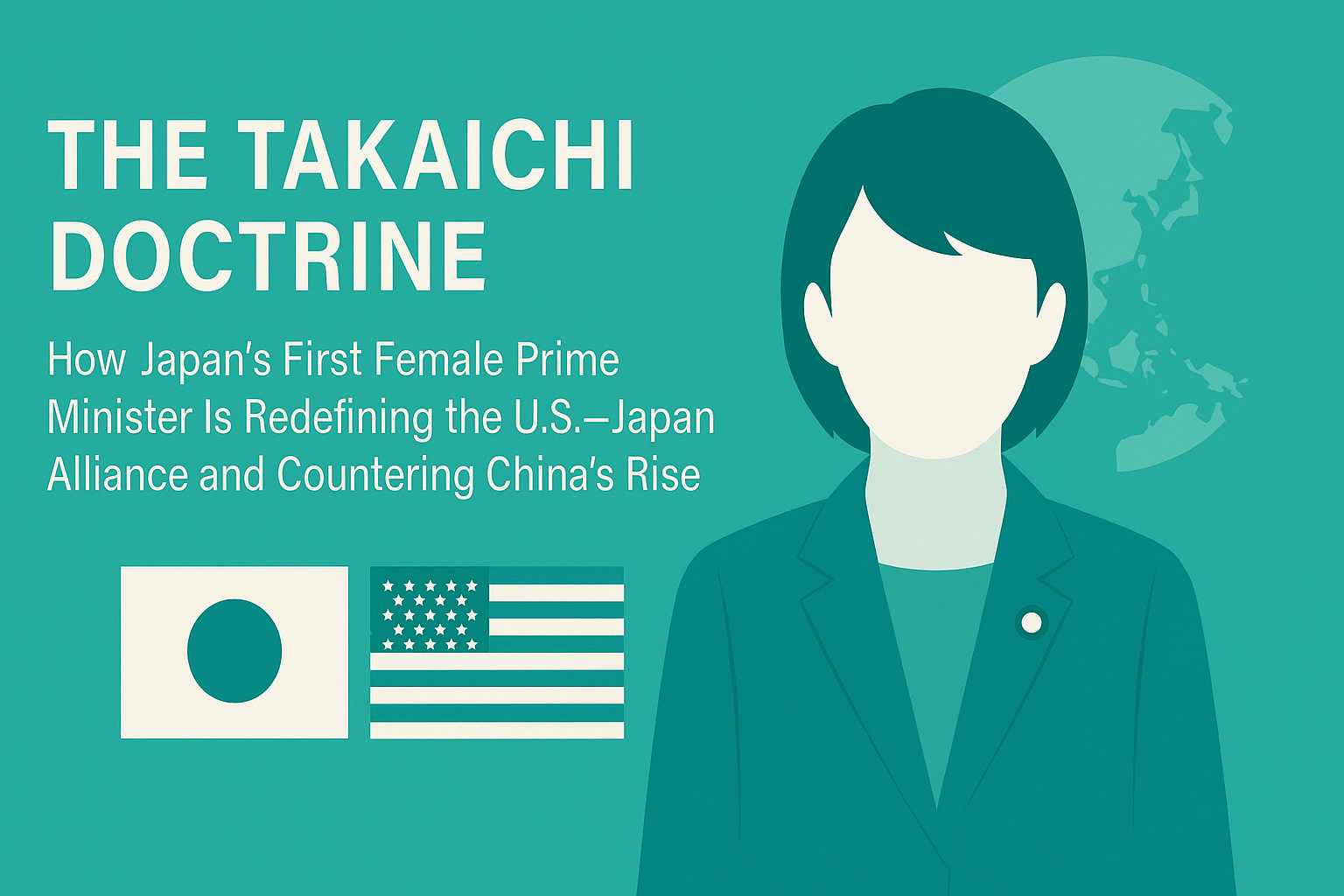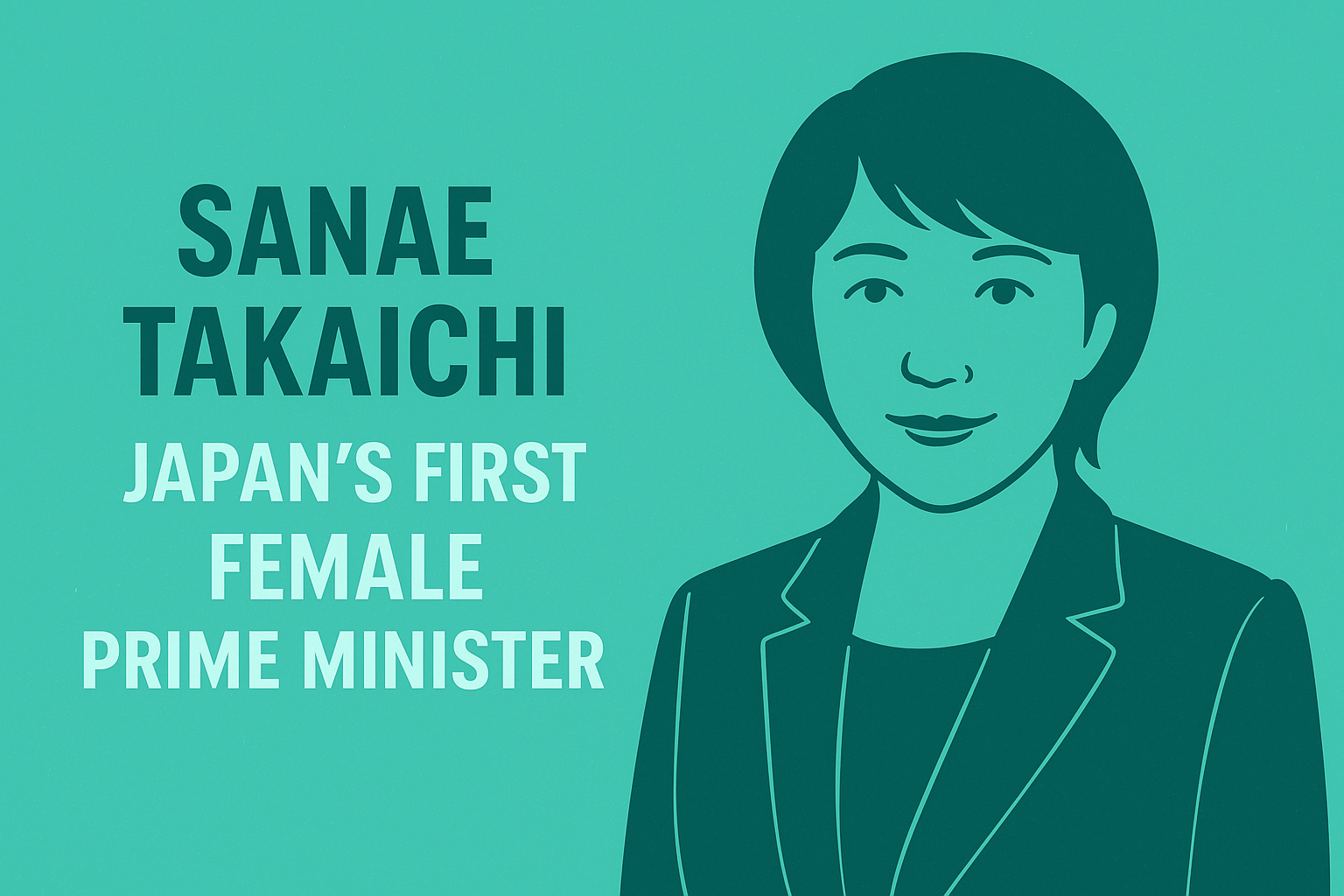Date:2025/10
- Main Article
- Takaichi’s Strategic Era Begins
- 1. The Foundation: Reinforcing the U.S.–Japan Alliance
- 2. Strategic Convergence: The Indo-Pacific Equation
- 3. Economic Security as Strategic Diplomacy
- 4. Takaichi’s China Doctrine: Firm Yet Calculated
- 5. Risks and Balancing Acts
- 6. The Broader Outlook: Japan as a Strategic Co-Architect
- Conclusion
Main Article
Takaichi’s Strategic Era Begins
Japan’s first female Prime Minister, Sanae Takaichi, has entered office with an unmistakable focus: to strengthen Japan’s national defense and redefine its alliance with the United States as a pillar of Indo-Pacific stability.
Her approach signals not only a political milestone but also a strategic pivot — from a reactive posture to a more assertive and integrated alliance model that spans security, technology, and industrial cooperation.
1. The Foundation: Reinforcing the U.S.–Japan Alliance
Takaichi has described the alliance as the cornerstone of Japan’s diplomacy, a phrase signaling continuity with previous administrations yet carrying sharper intent.
Under her government, Tokyo is expected to:
- Deepen operational integration with U.S. forces through expanded joint exercises and command coordination;
- Accelerate defense-industrial cooperation, particularly in missile systems, cyber defense, and AI-enabled surveillance;
- Enhance Japan’s own deterrence capacity, shifting from a purely “shield” role to one capable of counterstrike and regional support.
This recalibration reflects a new phase — from dependency to co-leadership — within the U.S.–Japan framework.
2. Strategic Convergence: The Indo-Pacific Equation
The Takaichi administration is aligning Tokyo’s strategic focus with Washington’s Free and Open Indo-Pacific (FOIP) vision.
Upcoming high-level talks in Tokyo (Oct 27–29), followed by a joint visit to the Yokosuka U.S. Navy base, are designed to visibly project alliance deterrence.
The symbolism is deliberate: an aircraft carrier deck becomes the stage for a reaffirmed commitment to defend the rules-based order amid growing regional volatility around Taiwan, the South China Sea, and North Korea.
3. Economic Security as Strategic Diplomacy
Beyond defense, Takaichi’s government is advancing a $550 billion U.S. investment package (MOU) first introduced under the prior administration.
While politically burdensome, it represents a dual-purpose mechanism:
- to consolidate Japan’s partnership with Washington, and
- to reduce Beijing-centric supply-chain dependence in critical sectors such as semiconductors, batteries, LNG, and rare-earth processing.
The investment framework — combining JBIC financing, NEXI guarantees, and private-sector bonds — aims to institutionalize “economic deterrence,” turning capital allocation into a tool of strategic balance.
4. Takaichi’s China Doctrine: Firm Yet Calculated
Takaichi’s rhetoric has long emphasized vigilance toward China’s military and technological expansion. Her policy orientation suggests:
- Hard-line deterrence through military modernization and joint interoperability;
- Economic decoupling where essential, notably in dual-use technologies and data infrastructure;
- Selective engagement in areas like climate cooperation and trade stability.
This hybrid model — resist, reduce, but not rupture — indicates a calculated realism, acknowledging both strategic rivalry and economic interdependence.
5. Risks and Balancing Acts
Analysts identify several risks in this emerging framework:
- Chinese backlash through trade or diplomatic measures;
- Fiscal strain as defense spending rises beyond 2 % of GDP;
- Alliance asymmetry, with Washington expecting faster deliverables in defense procurement;
- Regional perception, particularly from Seoul and ASEAN partners wary of polarization.
Takaichi’s challenge lies in maintaining strategic steadiness — to deter without provoking, to align without subordination, and to safeguard Japan’s own autonomy.
6. The Broader Outlook: Japan as a Strategic Co-Architect
The Takaichi government marks Japan’s entry into a new geopolitical era.
Where previous administrations framed alliance management as diplomatic maintenance, Takaichi envisions strategic co-architecture — a Japan that not only hosts but helps design the regional security order.
If successful, this could transform Japan from a “shielded ally” into a regional stabilizer and technological power center, reshaping the equilibrium between Washington and Beijing for the next decade.
Conclusion
The coming U.S.–Japan summit will be a litmus test of how far Tokyo is ready to institutionalize its strategic autonomy within the alliance framework.
Takaichi’s leadership blends ideological clarity with pragmatic realism — a combination that may redefine Japan’s place in the Indo-Pacific chessboard and its long-term posture toward China.


